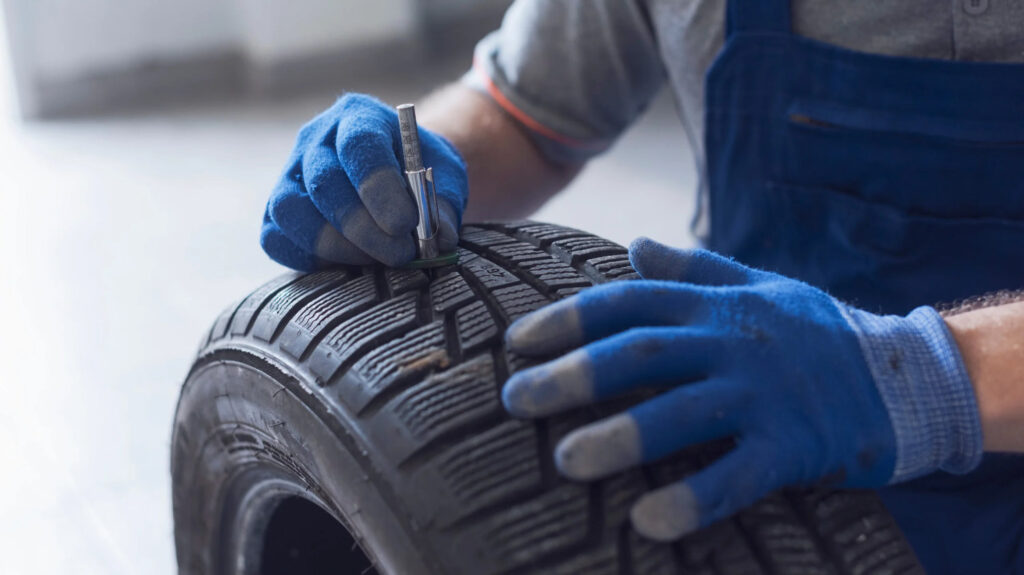Tires are one of the most important parts of your vehicle. They keep you safe on the road and help you get where you need to go. But tires don’t last forever. Over time, they wear down and need to be replaced.
But how do you know when it’s time to replace your tires? There are a few things you can look for to help you decide.

Tread Depth
One of the best ways to tell if your tires need to be replaced is to check the tread depth. The tread is the part of the tire that grips the road. As the tire wears down, the tread gets shallower. When the tread gets too shallow, it’s no longer safe to drive on.
The tread depth is measured in 32nds of an inch. Most states require that tires have a minimum tread depth of 2/32 of an inch. However, it’s a good idea to replace your tires before they get down to that level.
You can check the tread depth yourself using a penny. Simply insert a penny into the tread of the tire. If you can see the top of Lincoln’s head, the tread is worn and needs to be replaced.
Tread Wear Indicators
Most tires have tread wear indicators built into them. These are small raised bars that run across the tread. When the tread wears down to the level of the tread wear indicators, it’s time to replace the tire.
Tread wear indicators are usually located in the center of the tread, but they can also be found in other places on the tire. Check your owner’s manual to find out where the tread wear indicators are located on your tires.
Uneven Tread Wear
If you notice that the tread on your tires is wearing unevenly, it’s a sign that something is wrong. The following are some of the things that can cause uneven tread wear:
- Incorrect tire pressure
- Alignment problems
- Worn suspension components
- Damaged tires
If you notice uneven tread wear, it’s important to have your vehicle inspected by a qualified mechanic to determine the cause.
Bulges or Cracks
If you see any bulges or cracks in the sidewall of your tire, it’s a sign that the tire is damaged and needs to be replaced. Bulges and cracks can be caused by a number of things, including:

- Impact damage
- Overinflation
- Underinflation
If you see any bulges or cracks in your tires, it’s important to have them replaced immediately. Driving on a damaged tire can be very dangerous.
Vibrations
If you feel any vibrations while you’re driving, it could be a sign that your tires need to be balanced or aligned. Unbalanced or misaligned tires can cause a number of problems, including:
- Increased tire wear
- Decreased fuel efficiency
- Increased noise
- Difficulty controlling the vehicle
If you feel any vibrations while you’re driving, it’s important to have your vehicle inspected by a qualified mechanic to determine the cause.
Age
Even if your tires have good tread depth and no visible damage, they may still need to be replaced if they’re old. Tires typically last for about 6 years, but they can wear out sooner depending on how often you drive and how you maintain them.
If your tires are more than 6 years old, it’s a good idea to have them inspected by a qualified mechanic to see if they need to be replaced.
When to Replace Your Tires
If you notice any of the signs listed above, it’s time to replace your tires. Don’t wait until it’s too late. Replacing your tires when they need to be replaced is one of the best things you can do to keep yourself safe on the road.

Here are some tips for choosing new tires:
- Choose tires that are the right size and type for your vehicle.
- Choose tires that have the right tread pattern for your driving conditions.
- Choose tires that have the right load rating for your vehicle.
- Choose tires that have the right speed rating for your vehicle.
- Choose tires that are made by a reputable manufacturer.
Tires are an important investment in your safety and the safety of your passengers. Make sure you choose the right tires for your vehicle and replace them when they need to be replaced.

